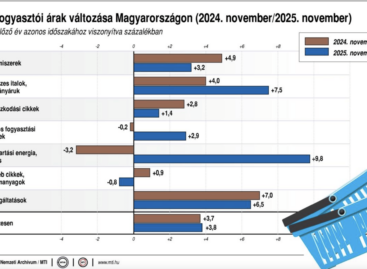This is how traffic in retail has changed with the use of the SZÉP card
In a bid to alleviate financial pressures on the Hungarian populace, the government introduced a groundbreaking change earlier this year. SZÉP cards, traditionally used for various leisure and hospitality services, were given a new lease of life – enabling consumers to purchase groceries. This move comes as part of broader EU initiatives aimed at creating a more unified market for such cards by December 2024.

The SZÉP card, a staple for Hungarian employees seeking cafeteria benefits, has undergone a transformation. Now, it can be used not only for warm meals but also for cold groceries. Employers have the flexibility to contribute funds to these cards even after the initial limit has been exhausted.
The change, which was implemented a little over a month ago, has been greeted with enthusiasm by cardholders. In August, consumers typically spent between 8,000 to 18,000 Hungarian Forints (HUF) using the SZÉP card for grocery purchases, according to card issuers. However, its adoption hasn’t drastically altered shopping trends within stores.
The response from retail chains has been mixed. Some, like Lidl and Tesco, suggest it’s still too early to gauge the full impact, as the shift is relatively recent. Others, such as the PENNY chain, have seen an interesting trend. SZÉP card users tend to spend approximately 17% more during their shopping visits compared to other payment methods.
The SZÉP card’s expansion into grocery shopping opens up new possibilities, especially with the approaching holiday season. This year, the cards can be instrumental in covering Christmas expenses, providing a financial cushion during times of inflation. However, users should keep in mind important deadlines and potential penalties. For instance, funds deposited after October 15, 2022, have a one-year validity period.
The SZÉP card’s foray into the grocery sector has been met with excitement, providing a fresh channel for users to manage their expenses. While the impact on shopping habits is still in its nascent stages, it holds significant promise for easing financial burdens. As the festive season approaches, SZÉP cards could become a valuable asset in managing expenses and enjoying the holiday season without breaking the bank. Nonetheless, users should remain informed about deadlines and potential penalties to make the most of this exciting development.
Related news
KSH: in November, consumer prices exceeded the values of the same month of the previous year by an average of 3.8 percent
🎧 Hallgasd a cikket: Lejátszás Szünet Folytatás Leállítás Nyelv: Auto…
Read more >Retail sales in a trap of uncertainty
🎧 Hallgasd a cikket: Lejátszás Szünet Folytatás Leállítás Nyelv: Auto…
Read more >KSH: retail turnover in October exceeded the same period of the previous year by 3.1 percent and the previous month by 0.5 percent
🎧 Hallgasd a cikket: Lejátszás Szünet Folytatás Leállítás Nyelv: Auto…
Read more >Related news
The HORECA sector joins forces with Alimentaria+Hostelco to mark the future of hospitality
🎧 Hallgasd a cikket: Lejátszás Szünet Folytatás Leállítás Nyelv: Auto…
Read more >Challenges of the retail sector: retail has become more crisis-resistant
🎧 Hallgasd a cikket: Lejátszás Szünet Folytatás Leállítás Nyelv: Auto…
Read more >How to avoid the hassles of online shopping?
🎧 Hallgasd a cikket: Lejátszás Szünet Folytatás Leállítás Nyelv: Auto…
Read more >






